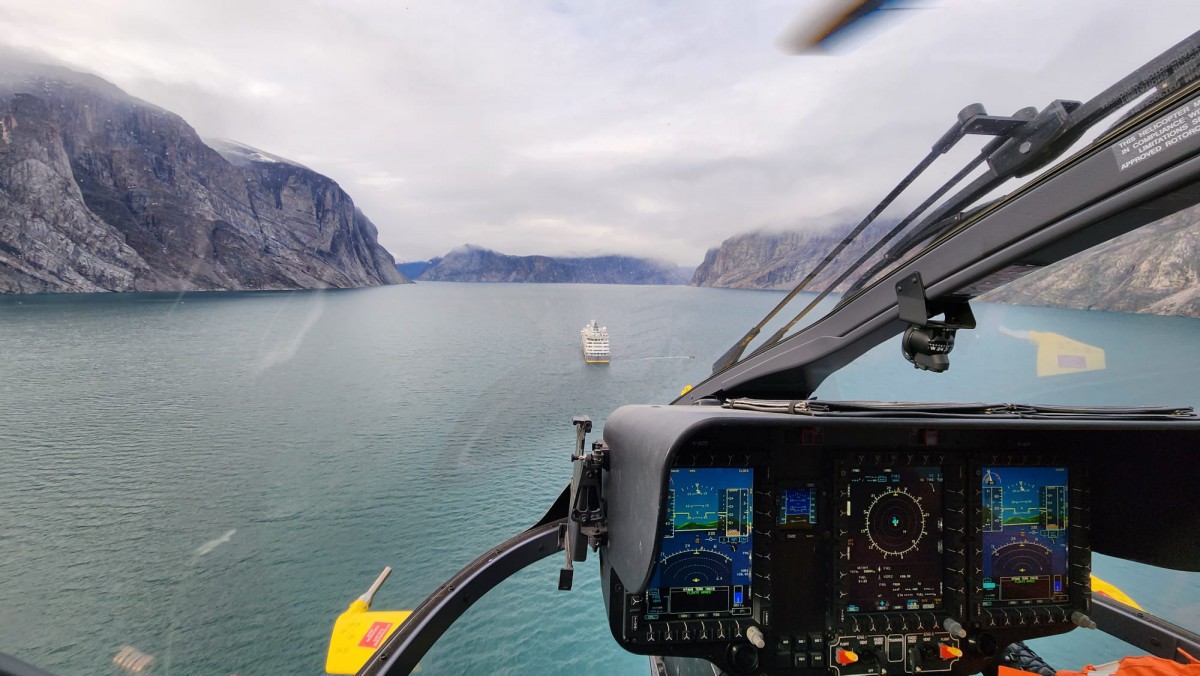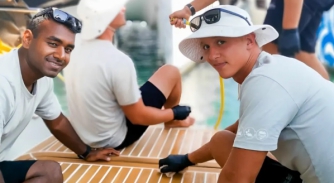Have a safe flight
An opinion piece on the importance of incorporating a comprehensive programme for helicopter operations to ensure safety for all on board…

When planning to include helicopter operations on board, it’s not just the construction of the yacht that needs serious consideration: establishing a helicopter programme that utilises a boat as its base of operations is essential too.
Having been in the helicopter and marine industry as a pilot and manager for 25 years, I am now witnessing the boom in helicopter-enabled vessels at sea. In order to enjoy all the possibilities helicopters on boats can offer, it is crucial to shift perspective accordingly.
The ultimate objective should guide the design of the vessel, so if the aim is to transport a helicopter to a destination where you can then take flight to explore places you’ve always dreamed of, it is necessary to not only construct a vessel but also craft an aviation programme tailored to those specific needs, with the vessel serving as a supporting component. This is especially true for explorer and support vessels as well, as the new 200 passenger ‘adventure cruise ships’ with helicopter operations.
Traditional yacht and ship construction predominantly emphasises maritime considerations like seaworthiness, endurance, vessel systems and owner/guest accommodation. Unfortunately, the aviation aspect often takes a backseat, treated almost as an afterthought due to constraints in design, limited space and the desire for multifunctionality. The consequence is often an aviation operation that is inadequately integrated and less than optimally functional, which in turn compromises safety.
Much of what ensures the safety and efficiency of an operation is dictated by design.
It is not enough to ‘slap’ a compliant helideck on the back and call it complete.
Consider an airport for a moment. Its primary purpose is to facilitate the arrival and departure of aircraft and efficiently process passengers. While modern airports also offer a range of facilities, the core focus remains on the safe and effective operation of aviation activities.
The more recent emergence of helicopter-enabled vessels, such as refitted explorer yachts accommodating more amenities than ever before, underscores the need to prioritise aviation operations in shipbuilding. Much of what ensures the safety and efficiency of an operation is dictated by design. It is not enough to ‘slap’ a compliant helideck on the back and call it complete.
Many critical components warrant attention. Refuelling systems require that the ship operator takes responsibility for the fuel quality and provides training for the engineers of its servicing and unique maintenance requirements to meet aviation standards. Accommodations for air crew, who require single cabins according to regulation, are often far below deck where ongoing noise and humming disrupt deep sleep, contributing to fatigue – that is IF aircrew quarters were even considered in the first place when calculating the required deck crew maths.
Additionally, all vessels should have a hangar where maintenance can be performed and the storage of parts can be facilitated to meet aviation requirements. Unforeseen maintenance due to weathering at sea can be up to 30 per cent more costly, so it is essential to have a preventative attitude on maintenance. In my humble opinion, all aircraft operating from ships in remote regions should be of the ‘true twin-engine’ helicopter category, providing redundancy in case on engine hesitations/stalls or failures.
Finally, the different departments and teams (bridge officers, helideck teams, aircrew, FRC, firefighters, medical and support crew) need to train and practise live helicopter emergencies together. The industry is made up of a million different training courses and certificates ensuring crews are well informed and tested etc. but it means very little if the time isn’t allowed and the money isn’t spent to routinely conduct full vessel-supported helicopter emergency training exercises where familiarity of equipment and systems isn’t meticulously run through to ensure that in a real emergency crews will react instinctively.
Let’s not settle for compromises where the norm should be purpose and intent to build the safest and best-functioning helicopter operation possible.
NEW: Sign up for SuperyachtNewsweek!
Get the latest weekly news, in-depth reports, intelligence, and strategic insights, delivered directly from The Superyacht Group's editors and market analysts.
Stay at the forefront of the superyacht industry with SuperyachtNewsweek
Click here to become part of The Superyacht Group community, and join us in our mission to make this industry accessible to all, and prosperous for the long-term. We are offering access to the superyacht industry’s most comprehensive and longstanding archive of business-critical information, as well as a comprehensive, real-time superyacht fleet database, for just £10 per month, because we are One Industry with One Mission. Sign up here.
Related news

A near miss
What procedures does your company have when a storm strikes while passengers and crew are engaged in recreational water sports?
Crew

New human rights course for crew
The Progressive Crew Career Programme has launched a new online course to educate crew on their human rights at sea
Crew

ISWAN updates crew safety guidelines
The seafarer association has released a new safety resource in response to rising reports of harassment and violence
Crew
.jpeg)
CHIRP Report: Pressurised to make a fatal decision
A tragic outcome that stemmed from an all too common set of occurrences in the superyacht industry
Crew
Related news
A near miss
1 year ago
New human rights course for crew
1 year ago
ISWAN updates crew safety guidelines
2 years ago
NEW: Sign up for
SuperyachtNewsweek!
Get the latest weekly news, in-depth reports, intelligence, and strategic insights, delivered directly from The Superyacht Group's editors and market analysts.
Stay at the forefront of the superyacht industry with SuperyachtNewsweek



